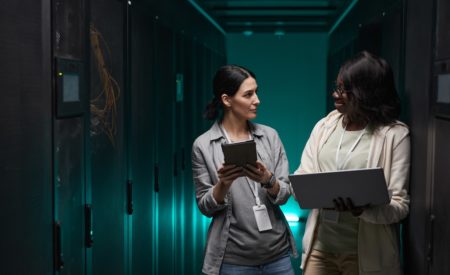
Content and the S/4HANA upgrade – What should you be thinking about?
In an episode of the Proceed podcast, we had the pleasure of sitting down with Proceed’s CTO, Paul Shakeshaft, to discuss the necessary considerations for SAP content management and the move to S/4HANA. You can enjoy the entire episode by watching the video above or review the key highlights below.
What do we mean by content in the SAP world?
In the SAP world, content refers to unstructured data, such as attachments to SAP business objects. These can include Word docs, PDFs, sound files, or CAD drawings – data not stored within the relational database but relevant to SAP data.
Content vs. structured data
Structured data in SAP involves defined tables with easy access, querying, and reporting capabilities. This includes business transactions and master data. In contrast, unstructured data poses challenges in migration due to varied storage locations and techniques, requiring a multifaceted approach.
In the context of an S/4HANA transition, what are the biggest challenges with content migration?
The major challenges involve defining scope, deciding how and when to migrate, and underestimating the time required for migration. Paul emphasises that the volume of documents and potential scope changes contribute to these challenges.
Migration routes, whether a conversion or a new deployment, significantly impact the migration strategy. While conversion may focus on source-to-target migration, a new deployment requires defining what to migrate, data mapping, and addressing potential ID mismatches.
Failure to properly consider content can result in leaving data behind or facing difficulties in linking and storing data in the new system. Discovering these issues late in the project can lead to delays during acceptance testing. Issues related to overlooked or missing data are relatively common – changes in staff, and evolving processes can contribute to these occurrences, as well as, discrepancies between how users typically work and what solution architects expect from user practices.
Best practices for successful content migrations?
To avoid issues, businesses should plan early, engage with both structured and unstructured data teams, and conduct a thorough system analysis. Paul, explains that testing processes for both data and documents, along with careful consideration of data mapping rules, are crucial for a successful migration.
To avoid issues with content migration, businesses should plan early, engage with both structured and unstructured data teams, and conduct a thorough system analysis.
Paul Shakeshaft, CTO of Proceed Group
Further reading
[On-demand webinar] Upgrading OpenText for S4HANA: A practical guide
You may be interested in

Free SAP data archiving report
Proceed Group’s free SAP data archiving report analyses your ECC or S/4HANA data in minutes and pinpoints savings, performance boosts and compliance gaps before you migrate to RISE or the cloud.
Read more

SAP ECC archiving – Customer story
To keep SAP ECC and operations running smoothly, a global food business archived 14TB of legacy data and moved attachments to a content server. The result was a leaner 11TB database and a stronger foundation for future growth.
Read more

SAP decommissioning and its role in modern IT strategy
Stopping legacy SAP systems is easier said than done. This article shows why SAP decommissioning deserves a place in every transformation roadmap, what a successful project looks like and how to secure buy-in from finance, IT and compliance teams.
Read more

